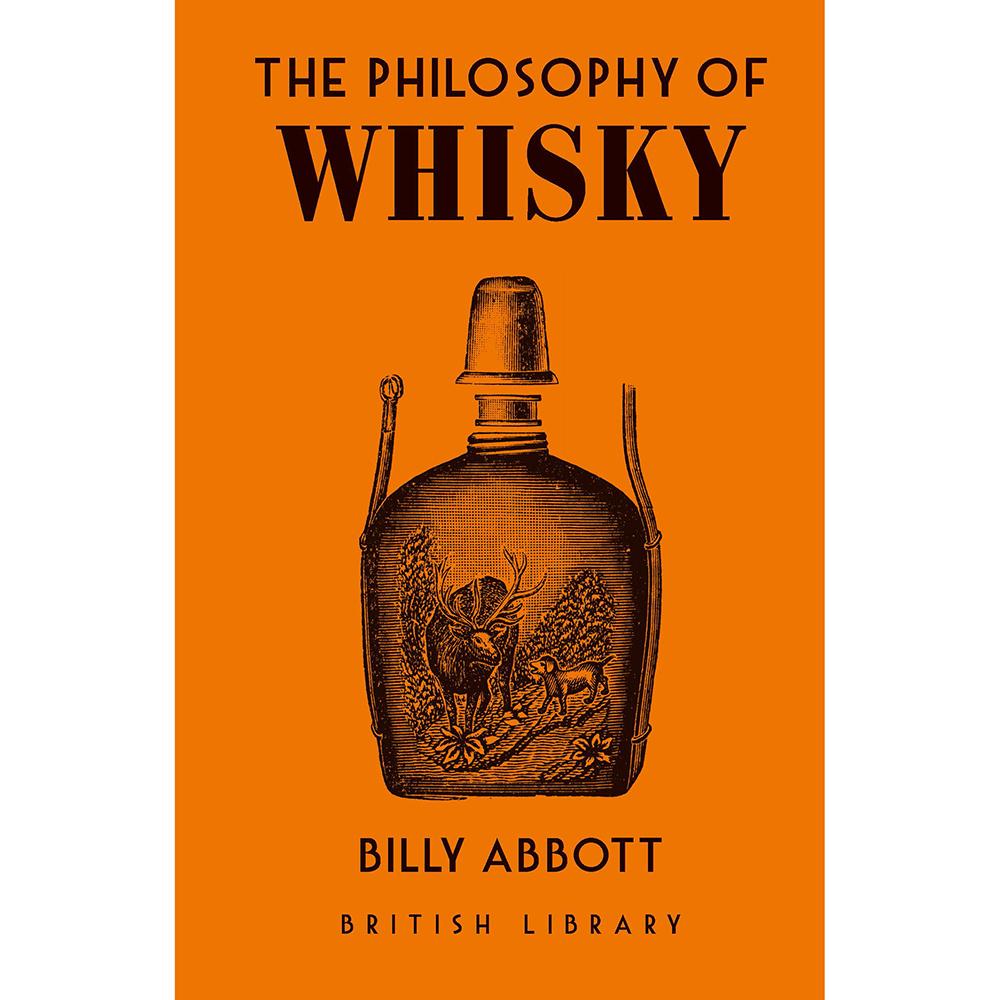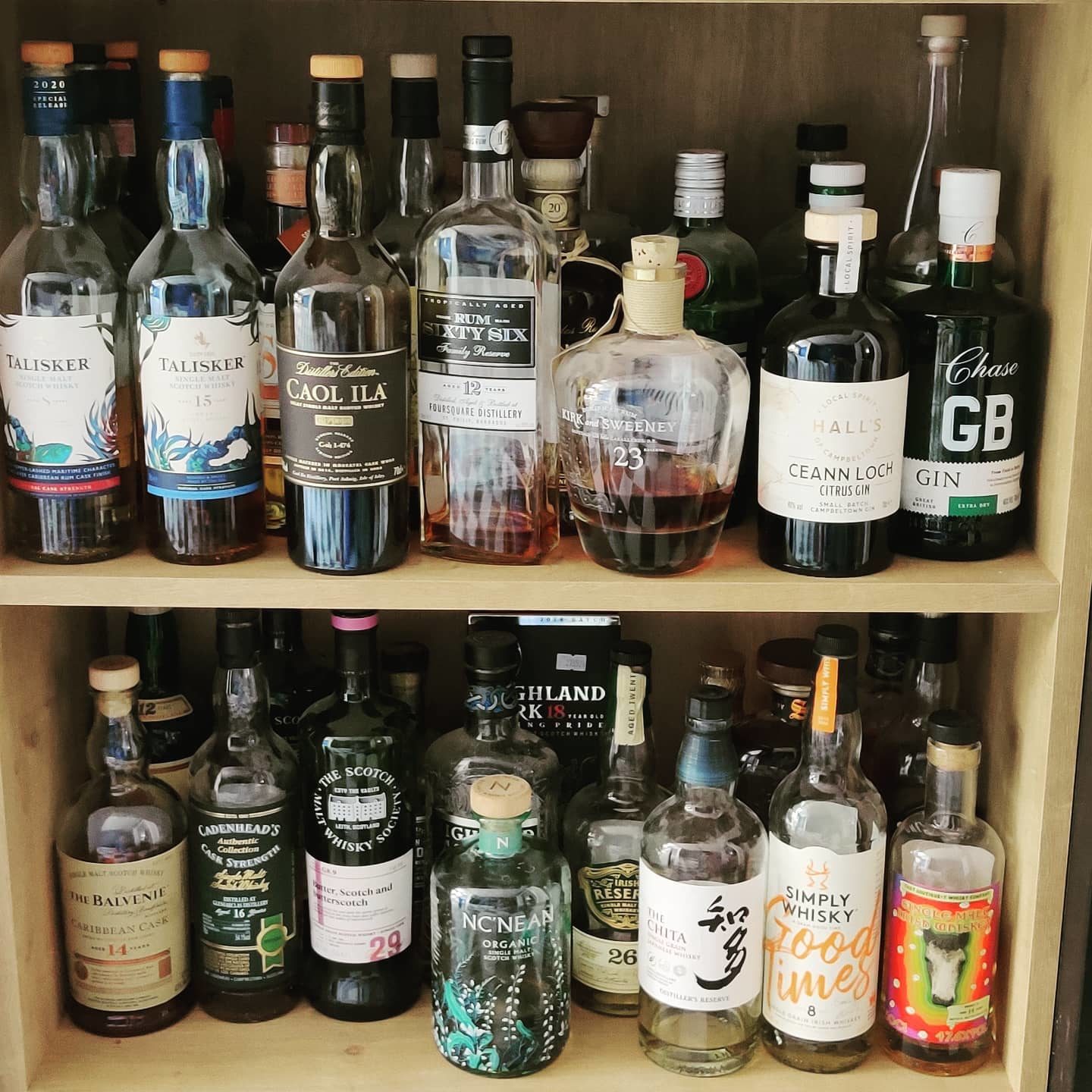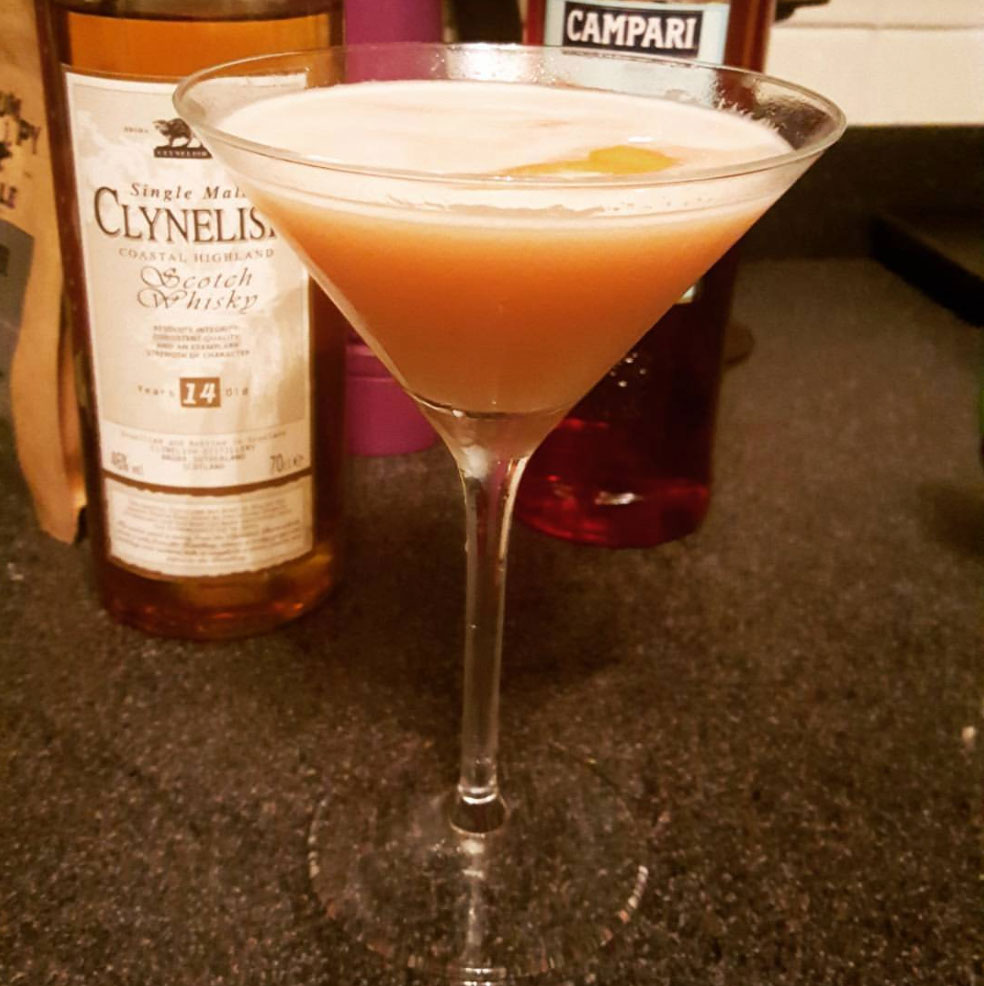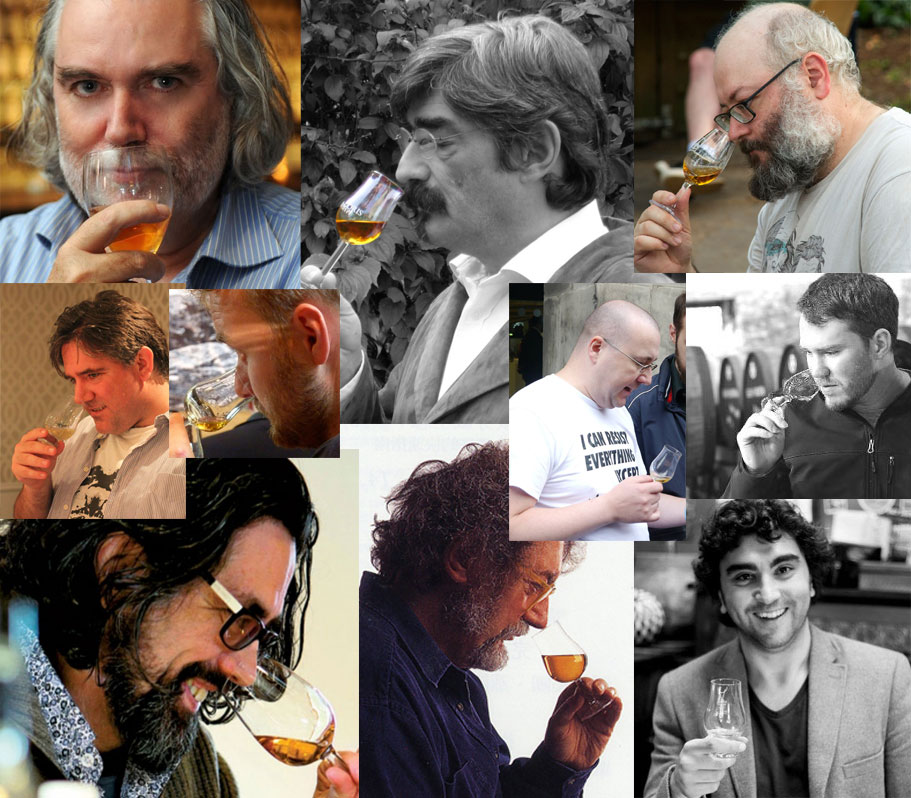 I’ve never been to a whisky tasting run by an independent operator where they preached the dictum “The age of a whisky is the most important thing, and the older it is – the better!”. Quite the opposite. Anyone who’s tried enough whisky to get past what you see on supermarket shelves will tell you that age is not the full story.
I’ve never been to a whisky tasting run by an independent operator where they preached the dictum “The age of a whisky is the most important thing, and the older it is – the better!”. Quite the opposite. Anyone who’s tried enough whisky to get past what you see on supermarket shelves will tell you that age is not the full story.
So it’s with some interest and a modicum of frustration that I read a couple of posts on the topic today – one excellent and passionately put by Lukasz over at the Edinburgh Whisky Blog, and another by self-declared arbiter of righteousness in the whisky world Oliver Klimek.
The central thesis of the posts is listing the reasons why the recent-ish “trend” of distilleries releasing Non Age Statement (NAS) whisky is a bad thing, for the consumer and for the marketplace – and without reiterating their posts, the concept of recent releases relates to the non-aged-statementyness of the liquid in the bottle, the packaging, the marketing, and the pricing. Ollie’s piece referred to these things independently, such that we’re also talking about the marketing and pricing of age-statement-carrying whisky too. Ollie refers to these things as worrisome trends. I wonder if he also thinks of gravity as a worrisome trend, and constantly glances up at the sky in case it gets any closer. Global warming is a worrisome trend. To the whisky enthusiast, overzealous marketing is an irritating and unavoidable development, but I wouldn’t lose any sleep worrying about it.

I’ve been trying to get the argument straight in my head for a while now in order to get out in a post: ever since being sent samples of some whiskies to try, such as Talisker Storm and its travel retail cousin Dark Storm, some of the Highland Park Warrior Series, some Glenfiddich bottles marked Reserve, Select, and Vintage Cask, Bowmore Small Batch Reserve, and Glenlivet Alpha. Some of these whiskies have been just lovely. I’ve developed a real soft spot for Talisker Storm. Glenlivet Alpha (with its age and provenance shrouded in mystery) trod a fine line between being interesting, radical experiment and totally masturbatory marketing exercise. Of the two Glenfiddichs I’ve tried so far, I actually preferred the “younger” one (i.e. not called Vintage) because of its distinctive taste. The Bowmore I thought was an absolute little cracker – certainly not a whisky to make you consider giving up your job and becoming a poet or sculptor, but for the price point it was very decent and just the sort of more-ish drop to make a resealable bottle almost totally unecessary.
As well as putting together blind tastings for our little group, I’ve been doing a bit of work behind the bar at the Soho Whisky Club from time to time: and I think that this is an invaluable thing for anyone who’s interested in learning more about whisky & the way other people perceive it. At Whisky Squad we do all of our tastings “blind”, so the default position is that people are making their judgement of preference on the whisky alone, and not finding out anything about the packaging, marketing or pricing until after they’ve had a bit of a chance to work out what they think it tastes of and whether they like it or not. These are probably the main people that I enjoy whisky with, and so this is my main mode of thinking about whisky. And then I go to work at the bar and have exchanges like:

“Can you recommend me a sherried whisky?”
“Yes! Have you tried the Glendronach 15? It’s a full and fruitcakey dram with a hint of dirtiness and a little liquorice in the finish.”
“You’ve got the Glendronach 18 there. Is that better?”
“Have you tried the 15 already?”
“No, but you’ve got the 18 – what’s that like? Better than the 15?”
“Well, if you don’t like the sound of the 15 then the 18 probably won’t win you over – there’s a lot of flavour profile crossover…”
“So the 18 isn’t better? What about the 21?”
And so on.
What do I say? “Yes, the 18 tastes 3 better than the 15”?
To me, as a person interested in helping people experience whisky generally it feels like the one consistent thing going on is that the marketplace is getting louder and this engenders a certain amount of shouting. Some are shouting “OLDER WHISKY IS BETTER!” and others are shouting “AGE ISN’T THE FULL STORY!”. We used to be able to draw a direct line saying Older Whisky Is More Expensive – and the corrolary Expensive Must Mean It’s Better – but recent developments have muddied this somewhat and I think this may be the source of the problem.
The trouble is: the banner statement “NAS whisky is overpriced crap” is to lump all NAS whisky in together. Glenmorangie Signet is a NAS whisky, and at about £120 a bottle isn’t cheap but it’s the only whisky of its kind and is one of my favourite whiskies just because of its flavour profile. Balvenie Tun 1401 is a series (up to about bottling number 9 or 10 now) which is by no means cheap, or getting any cheaper, and yet it is understood to be a batch of casks hand-selected by David Stewart: who quibbles about this whisky being worth north of £200? (and as my compadre Billy points out in his post on this subject, it’s got no age statement*). The famous “accident” Ardbeg Serendipity was (allegedly) a load of elderly Ardbeg inadvertantly vatted together with some young Glen Moray: by all accounts of those who bought it at the time at regular retail prices a wonderful dram with lots of elegant old Islay notes which may never have seen light of day as a single malt after disappearing over the 40%abv mark, but when pumped up a bit by another youthful cask or two to become up to strength, something we’re allowed to enjoy.
Am I cherry picking examples to support my argument? Sure! What I’m saying is that the argument needs to be better defined. Consider briefly Ardbeg – their lineup contains fairly few age statements. Corryvreckan, Uigeadail, Blasda, Alligator, Ardbeg Day, Ardbog, Rollercoaster, Supernova… not an age statement among them. The only age-statement whisky in the main lineup is Ardbeg 10. But hang on – the distillery shut down in 1981, and was only operating a very functional production run between 1989 and 1996, so what was in the 10 year old between 2000 and 2007 (when the new distillate had reached 10 years of age)? The bottle said 10yo, so the youngest whisky in there had to be a minimum of 10 years of age… I couldn’t find it easily (and feel free to correct me, anyone) but though the age statement on a whisky must be the age of the youngest in the mix, it doesn’t appear to mean you can’t put 10 years on the bottle if the youngest is 17?
Cutting to the chase amid the disproving of generalisations: what we’re really talking about as the root of “the problem” is that of companies releasing crap whisky.
As a discussion piece at the bar tonight, we looked at the “£7.95 a measure” shelf, and put this question about: if you had to choose a whisky to take to a desert island for a week, would you go for Ardbeg Corryvreckan, Glenfarclas 21yo, Highland Park 18yo, Lagavulin 12yo, Speyburn Solera 25yo or Tobermory 15yo? All mainstream releases, no indies.
From our entirely non-scientific consensus it’s either gonna be the Corry or the Laga 12. The Farclas and the Highland Park got consideration, because they’re both cracking drams – but I’d leap at a Corryvreckan or Lagavulin 12yo. So out of a sensible lineup it was the NAS or the youngest which were the favourites in the price range. Style, cask selection, and personal preference.
This isn’t addressing the Travel Retail NAS Deluge, I know – gosh, there’s so many nuances to this argument, isn’t there? Well, no, there isn’t.

What can we do to make things better? Well, if the problem is that there’s too much crap, overpriced whisky in the market then the best thing that we can do is to help people understand what they like and don’t like, gain confidence in their palates, and take advantage of opportunities to taste whisky before buying it. If they can’t get to tastings or join clubs then there’s options like The Whisky Tasting Club, or

Drinks By The Dram. If people know what they’re looking for then they’re less likely to just buy whatever’s waved in front of them on spec. Encourage people to read reviews, blogs, and magazines**, and make their own whisky drinking an experience rather than a functional pastime or a statement of dick-swinging prestige. If you asked me what I’d buy from the World Of Whiskies Exclusives page, I’d be hard pressed to answer you – but that’s mainly because I haven’t had a chance to taste most of them (plus, I’m skint at the minute – and no whisky is/should be “affordable” to someone without any money).
If people know what they like, and buy and drink it, then the whisky world is in a good place. And we can get back to enjoying discovering new shades of what we do and don’t like, and I can stop getting wound up about reading rhetoric involving “heralds of resistance”, “valiant knights”.
Nobody’s making you buy the stuff. Just be more judicious. And stop bleating that things you want are too expensive***. Or don’t. Vive la difference.
Ooooh, I could go on… but 2000 words is the humane limit. Would love to hear your thoughts though!
* Whilst the Tun 1401 carries no age statement, it does list the numbers of the casks that go into the vatting – albeit without a great deal of information about any of them. Is this enough information to placate the “With NAS you don’t know what you’re getting” brigade? I mean, cask numbers tell you LOADS about the whisky inside them, right? If there’s any decency in the world they should set up a web app that lets you enter a cask number and be given all their warehouse details about that cask! (note: this is not my actual opinion – were the tiny minority of nerds who might demand this sort of thing to get their way, just wait & see how prices would be affected…)
** By reading blogs & magazines, I suppose it’s the tasting notes that are of more interest than scores given the corner that scoring seems to have back itself into: the latest issue of Whisky Magazine printed 42 individual whisky scores, of which only one was below 7.2 and one above 8.8 – average mark being 8 out of 10. How this is meant to be helpful to anyone, I’ve no idea. But that’s a WHOLE other story****.
*** EVERYTHING is too expensive. It’s just how economics works. I’d love to try Black Bowmore, but I don’t have £4.5k I can spare for a bottle. And if you earthlings are going to fall for something as stupid as Prestige Pricing then frankly you deserve everything you get.
**** By which I probably mean “rant”.




